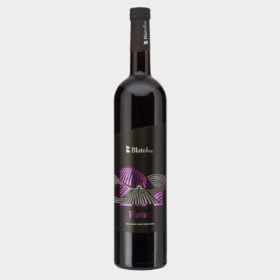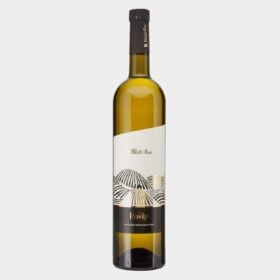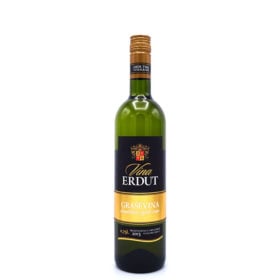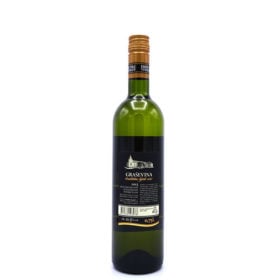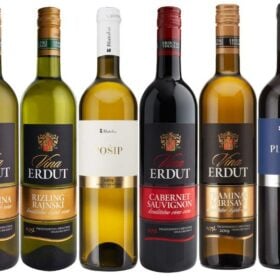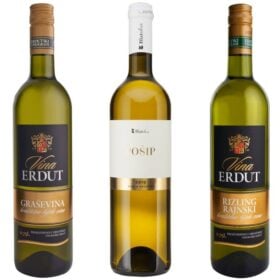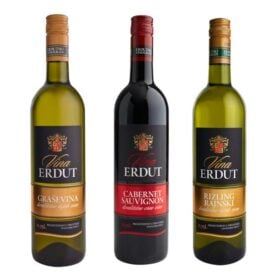Have you ever had a glass of fresh, chilled White wine poured and saw something strange at the bottom of your glass? If so, don't worry - it's just wine sediment! Wine sediment consists of dead yeast cells, tartaric acid crystals and other bits of grape residue that can fall out of suspension as the wine ages.
It is completely harmless to drink, but some people prefer to avoid it. However, many wine enthusiasts believe that sediment contributes to the flavor and complexity of the wine. But does it affect your wine and is it necessary to remove it from your wine?
Content
What is a wine sediment?
- Original price was: 19,98. 13,99Current price is: 13,99. Add to Cart
Wine sediment consists of several compounds, including tartrates, tannins and dead yeast cells. These molecules are suspended in the wine during fermentation and can eventually fall out of solution and form a sediment layer at the bottom of the bottle.
While some people may think wine sediment is a sign of poor quality, it is in fact a natural phenomenon in wines that have been aged longer. In fact, many wine enthusiasts believe that sediment contributes to the wine's flavor and complexity.
Wine sediment is a natural phenomenon in winemaking and refers to the small particles that settle at the bottom of a bottle of wine. Although some drinkers find sediments unpleasant, they are actually harmless and can even enhance the taste of the wine.
Should I be concerned about the wine sediment?
Wine sediment is a natural by-product of the winemaking process. It consists of dead yeast cells, bits of grape skin and other particles left behind after fermentation. Wine sediment is harmless and contains important antioxidants that can benefit your health.
Wine dregs, also called wine dregs or tartrates, are a natural by-product of wine grapes. The seeds and skins of the grapes contain compounds that can fall out of suspension and settle to the bottom of a wine bottle over time. Although sediment is harmless, it can give wine an unpleasant taste and mouthfeel.
Most winemakers filter their wines before bottling to remove any sediment, but some red wines are intentionally left unfiltered. If you have a bottle Red wine with sediment, simply decant it into another container before serving. This way you avoid unpleasant surprises when taking your first sip!
However, some people avoid drinking wine sediment as it can give the wine a bitter taste. While some other wine drinkers love it. To remove sediment from your wine, simply pour it into a carafe or strainer before serving.
What are crystals in wine?
When tartaric acid interacts with potassium in cold conditions, it can form tartrate crystals. These crystals can show up more if you have kept your wine in the fridge or refrigerated.
That's because temperature can affect the solubility of tartrates. Heat can help dissolve solids in liquids, while cold can turn them back into solids.
If you see tartrate crystals in your wine, don't worry! They are completely harmless and will not affect the taste of your wine. In fact, many winemakers prefer to have some sediment in their wines, as it is a sign of a high-quality, well-made wine. So go ahead and enjoy your bottle of wine, sediment and all!
Wine sediment in Red wine en White wine
There are a few key differences between White wine en Red wine that can explain the sediment levels. First, Red wine made with grape skins and seeds, while White wine that is not.
In addition, white wines more often than not refrigerated or refrigerated, which can lead to tartrate crystals. In general, you will therefore find less sediment in White wine then in red. However, this depends on the specific type of wine and how it was produced.
Does sediment mean the wine is spoiled?
Sediment in wine is not an indication that the wine has gone bad. It is also not an indicator that the wine is spoiled. Some winemakers even believe that sediment can contribute to the quality of the wine. It is up to the winemaker to decide whether or not to filter sediment from his wines.
Is it possible to remove the sediment in wine?
While it is not necessary to remove sediments from the wine before drinking it, many people prefer it. There are a few different methods that can be used to filter out sediments, depending on your preference. There are a few things you can do to reduce sediment in your wine glass to prevent.
While we usually recommend storing corked wines on their sides to prevent the cork from drying out, storing wines upright can be a good option for letting all the sediment settle to the bottom of your bottle. This way the sediment remains at the bottom of the bottle when pouring. But make sure that the cork does not dry out. A cork must remain wet to prevent it from drying out and allowing oxygen to get into the bottle.
Another way to reduce the amount of solids in your wine is to use a decanter. Simply pour your wine into the decanter, let it sit and aerate for a bit, and when you serve it, make sure to leave the last bit of wine (along with any sediment) at the bottom of the decanter.
Some people believe that bottled aerators can act as a wine sediment filter, filtering your wine as you pour. Aerating your wine is a good habit to get started, especially since it doesn't require any additional planning or prep time. So if you don't have a carafe handy, aerating your wine may be best.
When it comes to enjoying your wine, sediment shouldn't be an issue. With a little forethought and the right tools, you can avoid it all together. So go ahead and enjoy that glass of wine, without sediment!
Croatian wines
In short, wine sediment is a natural and harmless part of the winemaking process. It occurs when wines are aged in barrels and is usually filtered out before bottling the wine. However, some winemakers choose to leave sediment in their wines, which can add to the wine's flavor and body.
If you are looking for special wines, Croatian wines are a good option. The diverse climate and terrain of the land results in a wide variety of grapes, producing unique and delicious wines. Whether you're looking for a White wine with seafood or a Red wine to enjoy with a steak, you will definitely find the perfect bottle Croatian wine for your meal.


